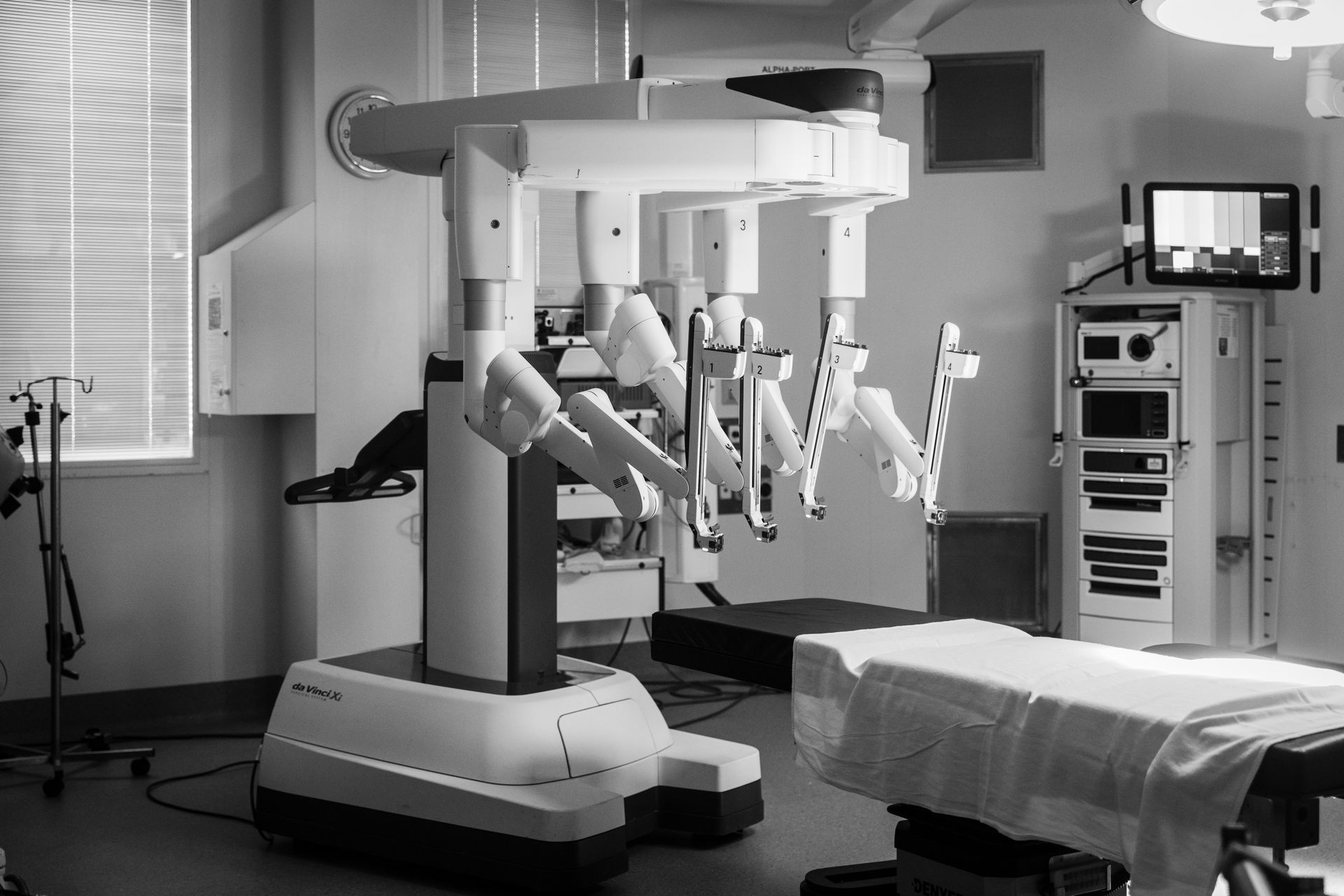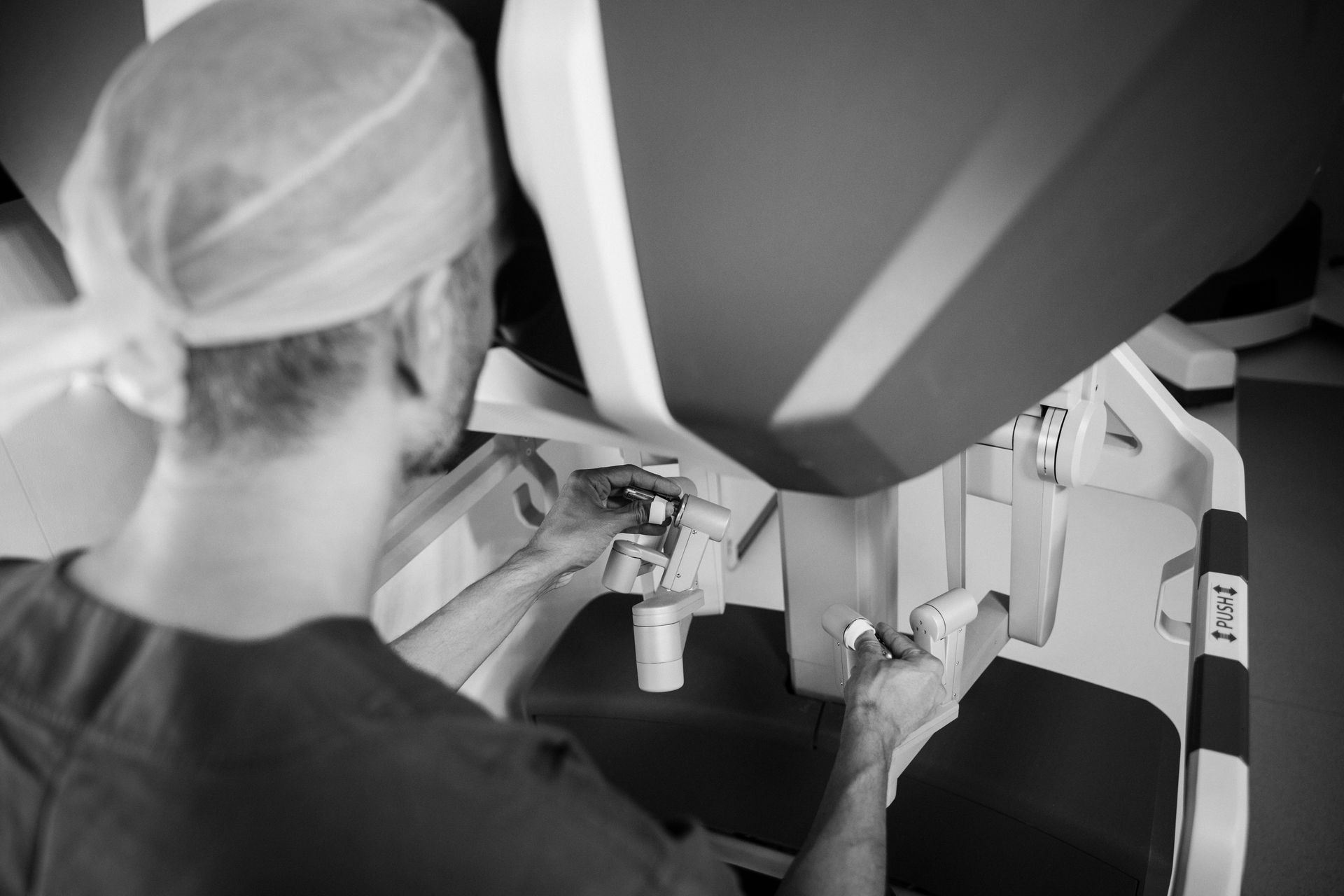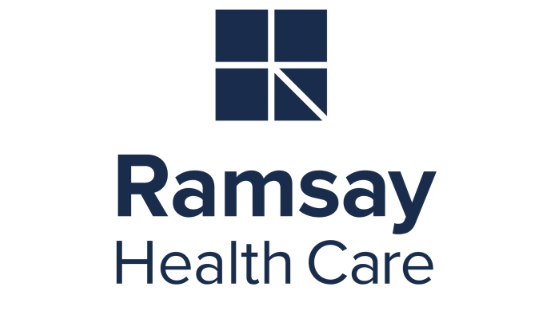Robot-Assisted Simple Prostatectomy
What is a Robot-assisted Simple Prostatectomy?
Simple Prostatectomy, also known as robotic simple prostatectomy, is a minimally invasive surgical procedure used to treat BPH.
During a simple robot-assisted prostatectomy, a surgeon uses a robotic surgical system to remove the enlarged part of the prostate gland that is causing the urinary symptoms. The procedure is minimally invasive because it is performed through several small abdominal incisions, typically resulting in less blood loss, shorter hospital stays, and quicker recovery than traditional open surgery.
Who is Suitable for a Simple Robot-Assisted Prostatectomy?
- Symptomatic BPH: This procedure is typically recommended for patients with moderate to severe symptoms of BPH that are not adequately managed with medication or other conservative treatments. Symptoms may include urinary frequency, urgency, nocturia (waking up at night to urinate), weak urine stream, and difficulty starting or stopping urination.
- Prostate Size: Patients with significantly enlarged prostates are often good candidates for simple robot-assisted prostatectomy. Enlarged prostates too large for urethral approaches are more likely to benefit from this surgical intervention.
- Overall Health: Candidates for this procedure should have relatively good overall health and tolerate general anaesthesia and surgery. The patient's medical history, including any other medical conditions or medications they are taking, will be considered to determine if they are suitable for surgery.
Benefits of Simple Robot-Assisted Prostatectomy
- Minimally Invasive: The procedure is minimally invasive, performed through small incisions, which results in less trauma to surrounding tissues, reduced blood loss, and potentially faster recovery times compared to traditional open surgery.
- Precision and Accuracy: Robot-assisted surgery allows for precise and accurate removal of the enlarged portion of the prostate gland, minimising damage to surrounding structures such as nerves and blood vessels.
- Shorter Hospital Stay: Patients undergoing simple robot-assisted prostatectomy typically have shorter hospital stays compared to open surgery, often being discharged within 48 hours after the procedure.
- Quicker Recovery: Due to the minimally invasive nature of the surgery, patients may experience faster recovery times and less pain and discomfort than with traditional open surgery.
- Reduced Risk of Complications: Minimally invasive procedures like robot-assisted prostatectomy are associated with a lower risk of complications such as infection, blood loss, and postoperative pain.
- Improved Urinary Symptoms: Removing the obstructing portion of the prostate gland can significantly improve urinary symptoms such as frequency, urgency, weak urine stream, and incomplete bladder emptying.
Types of Simple Robot-Assisted Prostatectomy
There are a few variations of robot-assisted prostatectomy:
- Simple Transcapsular Prostatectomy: In this approach, the surgeon accesses the prostate through incisions in the lower abdomen directly onto the prostate capsule. The capsule is opened, and all obstructing tissue is removed.
- Simple Transveical Prostatectomy: In this approach, the surgeon accesses the prostate through incisions in the lower abdomen and through the bladder. This approach may be preferred in certain cases based on the patient's anatomy or the presence of any associated bladder stones.
Alternative Options to Simple Robot-Assisted Prostatectomy
- Medications
- Holmium laser enucleation of the prostate (HoLEP)
- Greenlight laser prostatectomy (GLLP)
- Prostate artery embolisation (PAE)
- Traditional Open Prostatectomy
Preparation Before Simple Robot-Assisted Prostatectomy
- Medical Evaluation: Your doctor will conduct a thorough medical evaluation to assess your overall health and suitability for surgery. This may involve reviewing your medical history, performing physical exams, and ordering preoperative tests such as blood tests, urine tests, and imaging studies (e.g., ultrasound, MRI).
- Medications: Your doctor may advise you to stop taking certain medications before surgery, particularly those that can increase the risk of bleeding or interact with anaesthesia. Be sure to follow your provider's instructions regarding medication management.
- Preoperative Instructions: You will receive specific instructions to follow in the hours leading up to your surgery. This may include fasting (not eating or drinking anything) for a certain period before the procedure to prevent complications associated with anaesthesia.
- Preparation at Home: Prepare your home for your postoperative recovery. Arrange for someone to drive you home from the hospital after surgery and assist you with daily activities during your recovery period.
Simple Robot-Assisted Prostatectomy Procedure
- Anaesthesia: You will be administered general anaesthesia, which will render you unconscious and pain-free throughout the procedure.
- Incisions: The surgeon will make several small incisions in your abdomen to access the prostate gland. These incisions serve as entry points for the robotic instruments.
- Robotic Surgery: The surgeon will use a robotic surgical system to perform the prostatectomy. They will control the robotic arms from a console in the operating room while viewing a magnified, high-definition 3D image of the surgical site on a monitor.
- Prostatectomy: The surgeon will carefully remove the enlarged portion of your prostate gland that is causing urinary symptoms. This involves enucleation (removal) of the inner portion of the prostate while leaving the outer portion intact.
- Closure: The surgeon will close the incisions with sutures or surgical staples once the procedure is complete.
- Recovery Room:
After the surgery, you will be taken to a recovery area where medical staff will monitor your vital signs and ensure you wake up from anaesthesia safely.


Simple Robot-Assisted Prostatectomy Prognosis
The prognosis following a simple robot-assisted prostatectomy is generally excellent, with the majority of patients experiencing significant improvement in urinary symptoms and quality of life. Key factors influencing prognosis include:
- Symptom Severity: Patients with more severe urinary symptoms and larger prostates often experience the most significant improvement following surgery.
- Patient Health: Patient health and preexisting medical conditions can impact recovery and outcomes following surgery.
- Surgical Technique: The skill and experience of the surgical team performing the procedure can influence outcomes, including the degree of symptom relief and the occurrence of complications.
- Adherence to Postoperative Care: Following postoperative instructions, attending follow-up appointments, and engaging in recommended lifestyle modifications can contribute to successful recovery and long-term symptom management.
Simple Robot-Assisted Prostatectomy Risks
- Urinary Incontinence
- Erectile Dysfunction
- Bleeding and Infection
- Complications from Anesthesia
- Rare Complications (blood clots, bowel injury, urinary tract injury, and hernias)








